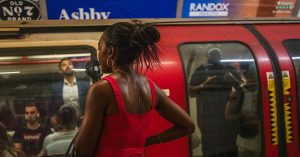Per $1 billion in company revenues, no supply chain application has a better return on investment (ROI) than network design! The larger the supply chain, the bigger the payout. Further, these projects are not for the faint of heart. Executives must have the fortitude to make changes in the operating policies and the network infrastructure that may affect the lives of employees.
I recently talked to a former executive at a global automotive manufacturer. This company had undergone a network design project in 2018 with Solvoyo. The project was focused on the spare parts supply chain – the delivery of car parts and aftermarket accessories to automotive dealers and repair shops across Europe from their OEM vendors as well as their own manufacturing facilities in Europe. This supply chain spanned across 24 nations. The project was focused on combining the spare parts warehouses from two of the brands owned by the automaker. The goal was to consolidate redundant distribution center (DC) locations, store the parts from both brands in all the DCs, and service the dealer networks while achieving an unprecedentedly high customer satisfaction target of 95% across the board.
Network design solutions are absolutely necessary to uncover business value when the production-distribution infrastructure is large. A company with one factory and one DC, reorganizing the location and duties of the facilities, will have little opportunity to drive much in the way of payback from a network design solution. However, in this case, the global spare parts network was huge: over 1,700 suppliers, 19 DCs, a vast cross dock network, and over 16,000 dealers and independent repair shops. 6,000 people were working in those DCs that housed close to 400,000 active unique SKUs. And these DCs were responsible for over 1.5 million outbound shipments per year.
A network design solution operates by looking at the Total Cost to Serve (TCTS) across a range of fixed and marginal costs. Scenarios are run, and the low-cost network that best meets customer service objectives is selected. For this project, Solvoyo consultants built a network design model and ran more than 120 scenarios to refine the customer service and inventory mix strategy. Many scenarios were necessary because the way goods flowed from factories to DCs and from DCs out to customers were quite complex.
The project took close to nine months. And, this was not because of the number of scenarios, but the initial quality of the data. Data cleaning took much longer than running the scenarios. The investment into data quality and internal consistency always proves to be valuable, as the quality of the scenario recommendations depends on the quality of the inputs.
In general, the short-term savings from network design will come from optimizing the flows and therefore, reducing transportation costs. Structural changes are usually made as a part of mid- to long-term strategy, since they involve significant investment or divestment that takes time to accomplish.
Within a few months of the end of the project, optimized goods flow patterns paid for the project many times over. Short-term savings of 18 million Euros, a reduction of 4% of the total cost of the spare parts supply chain, were achieved. These were the easy savings. They came without any changes to the DC network or the 3PL contracts.
However, the project also identified savings from the consolidation of the third-party logistics (3PL) contracts. In many cases, these 3PLs were serving different automotive brands with separate contracts and different costs for the same service. Renegotiating contracts, closing some DCs and opening others is where management fortitude is required. When completed, these actions are expected to result in an additional 11 million Euros of savings while meeting stringent service level targets.
In the age of sustainability, reduced transportation mileage and fuller trucks also equate to significant reductions in carbon emissions. The measurable benefits of this project also included significant reduction in carbon emissions on inbound and interfacility deliveries. The belief is that an 88-93% reduction in the CO2 footprint will occur on the outbound lanes once deliveries are made with eco-friendly EVs.
Finally, this project also gave this automaker the impetus to create a supply chain analytics department that can run these types of scenarios on an ongoing basis.
Read the full article here








